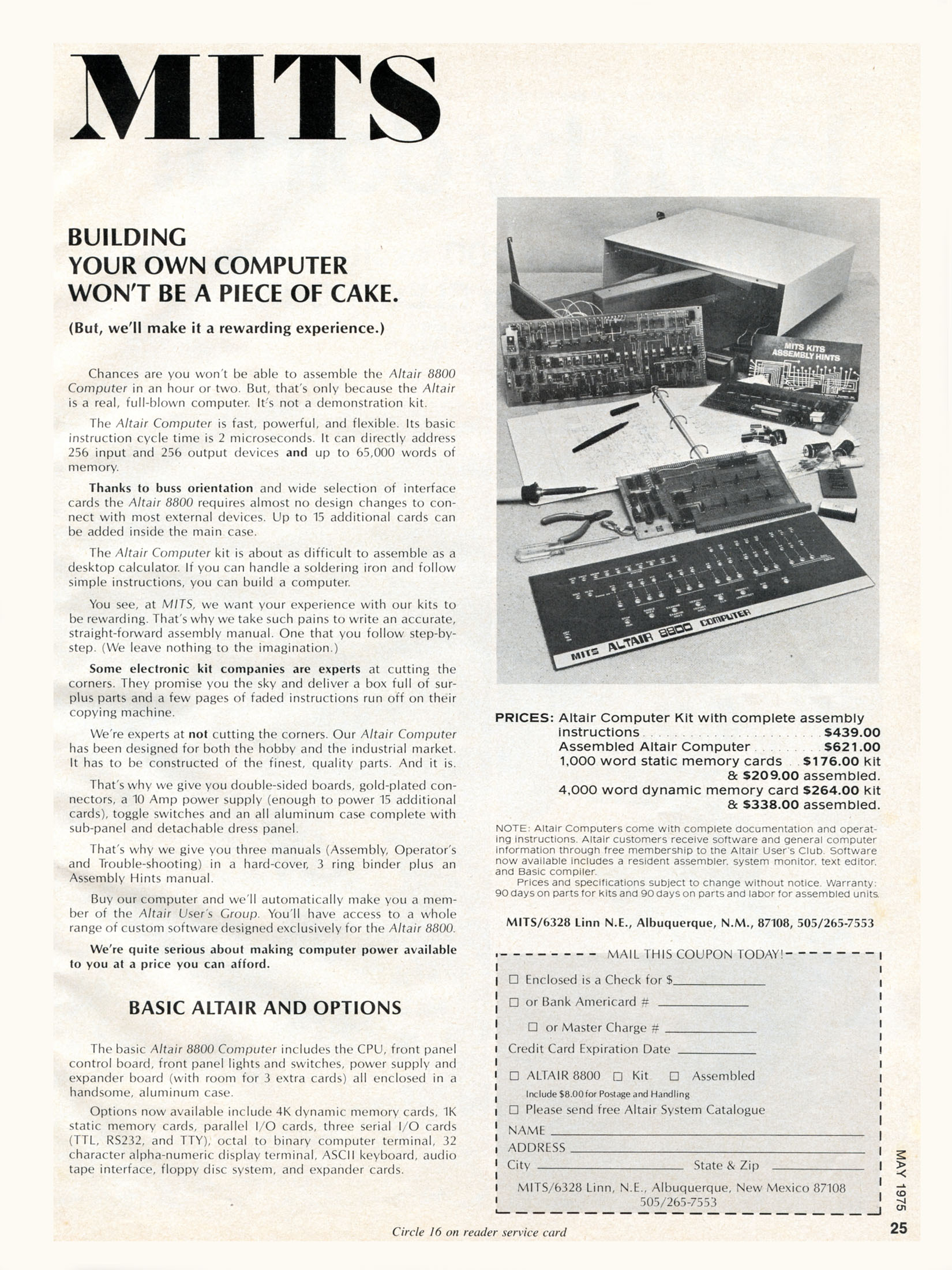|
Pertec
Pertec Computer Corporation (PCC), formerly Peripheral Equipment Corporation (PEC), was a computer company based in Chatsworth, California which originally designed and manufactured peripherals such as floppy drives, tape drives, instrumentation control and other hardware for computers. Pertec's most successful products were hard disk drives and tape drives, which were sold as OEM to the top computer manufacturers, including IBM, Siemens and DEC. Pertec manufactured multiple models of seven and nine track half-inch tape drives with densities 800CPI ( NRZI) and 1600CPI ( PE) and phase-encoding formatters, which were used by myriad original equipment manufacturers as I/O devices for their product lines. In the 1970s, Pertec entered the computer industry through several acquisitions of computer producers and started manufacturing and marketing mostly minicomputers for data processing and pre-processing. This split up Pertec into two companies. Pertec Peripherals Corporation (PPC), ... [...More Info...] [...Related Items...] OR: [Wikipedia] [Google] [Baidu] |
Micro Instrumentation And Telemetry Systems
Micro Instrumentation and Telemetry Systems (MITS) was an American electronics company founded in Albuquerque, New Mexico that began manufacturing electronic calculators in 1971 and personal computers in 1975. Ed Roberts and Forrest Mims founded MITS in December 1969 to produce miniaturized telemetry modules for model rockets such as a roll rate sensor.The editor describes the first MITS modules with photo of the units. In 1971, Roberts redirected the company into the electronic calculator market and the MITS 816 desktop calculator kit was featured on the November 1971 cover of ''Popular Electronics''. The calculators were very successful and sales topped one million dollars in 1973. A brutal calculator price war left the company deeply in debt by 1974. Roberts then developed the first commercially successful microcomputer, the Altair 8800, which was featured on the January 1975 cover of ''Popular Electronics''. Hobbyists flooded MITS with orders for the $397 computer kit. Paul ... [...More Info...] [...Related Items...] OR: [Wikipedia] [Google] [Baidu] |
Keypunch
A keypunch is a device for precisely punching holes into stiff paper cards at specific locations as determined by keys struck by a human operator. Other devices included here for that same function include the gang punch, the pantograph punch, and the stamp. The term was also used for similar machines used by humans to transcribe data onto punched tape media. For Jacquard looms, the resulting punched cards were joined together to form a paper tape, called a "chain", containing a program that, when read by a loom, directed its operation.Bell, T.F. (1895) '' Jacquard Weaving and Designing'', Longmans, Green And Co. For Hollerith machines and other unit record machines the resulting punched cards contained data to be processed by those machines. For computers equipped with a punched card input/output device the resulting punched cards were either data or programs directing the computer's operation. Early Hollerith keypunches were manual devices. Later keypunches were electrom ... [...More Info...] [...Related Items...] OR: [Wikipedia] [Google] [Baidu] |
Microsoft BASIC
Microsoft BASIC is the foundation software product of the Microsoft company and evolved into a line of BASIC interpreters and compiler(s) adapted for many different microcomputers. It first appeared in 1975 as Altair BASIC, which was the first version of BASIC published by Microsoft as well as the first high-level programming language available for the Altair 8800 microcomputer. During the home computer craze during the late-1970s and early-1980s, BASIC was ported to and supplied with many home computer designs. Slight variations to add support for machine-specific functions, especially graphics, led to a profusion of related designs like Commodore BASIC and Atari Microsoft BASIC. As the early home computers gave way to newer designs like the IBM Personal Computer and Macintosh, Apple Macintosh, BASIC was no longer as widely used, although it retained a strong following. The release of Visual Basic (classic), Visual Basic reboosted its popularity and it remains in wide use on Mic ... [...More Info...] [...Related Items...] OR: [Wikipedia] [Google] [Baidu] |
Altair 8800
The Altair 8800 is a microcomputer designed in 1974 by MITS and based on the Intel 8080 CPU. Interest grew quickly after it was featured on the cover of the January 1975 issue of Popular Electronics and was sold by mail order through advertisements there, in ''Radio-Electronics'', and in other hobbyist magazines. The Altair is widely recognized as the spark that ignited the microcomputer revolution as the first commercially successful personal computer. The computer bus designed for the Altair was to become a ''de facto'' standard in the form of the S-100 bus, and the first programming language for the machine was Microsoft's founding product, Altair BASIC. "This announcement ltair 8800ranks with IBM's announcement of the System/360 a decade earlier as one of the most significant in the history of computing." History While serving at the Air Force Weapons Laboratory at Kirtland Air Force Base, Ed Roberts and Forrest M. Mims III decided to use their electronics background ... [...More Info...] [...Related Items...] OR: [Wikipedia] [Google] [Baidu] |
Chatsworth, Los Angeles
Chatsworth is a suburban neighborhood in the City of Los Angeles, California, in the San Fernando Valley. The area was home to Native Americans, some of whom left caves containing rock art. Chatsworth was explored and colonized by the Spanish beginning in the 18th century. The land was part of a Spanish land grant, Rancho Ex-Mission San Fernando, in the 19th century, and after the United States took over the land following the Mexican–American War, it was the largest such grant in California. Settlement and development followed. Chatsworth has seven public and eight private schools. There are large open-space and smaller recreational parks as well as a public library and a transportation center. Distinctive features are the former Chatsworth Reservoir and the Santa Susana Field Laboratory. The neighborhood has one of the lowest population densities in Los Angeles and a relatively high income level. Chatsworth is the home of the Iverson Movie Ranch, a 500-acre area which was ... [...More Info...] [...Related Items...] OR: [Wikipedia] [Google] [Baidu] |
BASIC
BASIC (Beginners' All-purpose Symbolic Instruction Code) is a family of general-purpose, high-level programming languages designed for ease of use. The original version was created by John G. Kemeny and Thomas E. Kurtz at Dartmouth College in 1963. They wanted to enable students in non-scientific fields to use computers. At the time, nearly all computers required writing custom software, which only scientists and mathematicians tended to learn. In addition to the program language, Kemeny and Kurtz developed the Dartmouth Time Sharing System (DTSS), which allowed multiple users to edit and run BASIC programs simultaneously on remote terminals. This general model became very popular on minicomputer systems like the PDP-11 and Data General Nova in the late 1960s and early 1970s. Hewlett-Packard produced an entire computer line for this method of operation, introducing the HP2000 series in the late 1960s and continuing sales into the 1980s. Many early video games trace their ... [...More Info...] [...Related Items...] OR: [Wikipedia] [Google] [Baidu] |
Megabyte
The megabyte is a multiple of the unit byte for digital information. Its recommended unit symbol is MB. The unit prefix ''mega'' is a multiplier of (106) in the International System of Units (SI). Therefore, one megabyte is one million bytes of information. This definition has been incorporated into the International System of Quantities. In the computer and information technology fields, other definitions have been used that arose for historical reasons of convenience. A common usage has been to designate one megabyte as (220 B), a quantity that conveniently expresses the binary architecture of digital computer memory. The standards bodies have deprecated this usage of the megabyte in favor of a new set of binary prefixes, in which this quantity is designated by the unit mebibyte (MiB). Definitions The unit megabyte is commonly used for 10002 (one million) bytes or 10242 bytes. The interpretation of using base 1024 originated as technical jargon for the byte SI prefix, mult ... [...More Info...] [...Related Items...] OR: [Wikipedia] [Google] [Baidu] |
Operating System
An operating system (OS) is system software that manages computer hardware, software resources, and provides common services for computer programs. Time-sharing operating systems schedule tasks for efficient use of the system and may also include accounting software for cost allocation of processor time, mass storage, printing, and other resources. For hardware functions such as input and output and memory allocation, the operating system acts as an intermediary between programs and the computer hardware, although the application code is usually executed directly by the hardware and frequently makes system calls to an OS function or is interrupted by it. Operating systems are found on many devices that contain a computer from cellular phones and video game consoles to web servers and supercomputers. The dominant general-purpose personal computer operating system is Microsoft Windows with a market share of around 74.99%. macOS by Apple Inc. is in second place (14.84%), and ... [...More Info...] [...Related Items...] OR: [Wikipedia] [Google] [Baidu] |
Business Operating System (software)
The Business Operating System, or BOS, was initially developed as an early cross-platform operating system, originally produced for Intel 8080 and Motorola 6800 computers, then redeveloped for actual businesses and business models. The technology began subsequently for Zilog Z80-based computers, and then later for most microcomputers of the 1980s, then developed into a premium automated software solution for Investors and Asset Managers alike. CAP Ltd, a British company and at the time one of the world's largest Information Technology consulting firms, developed BOS. CAP designed BOS and BOS applications for platform-independence. Via a management buyout (MBO) in 1981, BOS was spun off to three interlinked companies, MPSL (MicroProducts Software Ltd) which looked after the sales and marketing of BOS, MPPL (MicroProducts Programming Ltd) which looked after both the development of BOS and various horizontal software packages, and MicroProducts Training Ltd. BOS was distributed o ... [...More Info...] [...Related Items...] OR: [Wikipedia] [Google] [Baidu] |
Business Basic
Business Basic is a category of variants of the BASIC computer programming language which were specialised for business use on minicomputers in the 1970s and 1980s. To the underlying BASIC language, these dialects added record handling instructions similar to those in COBOL, allowing programmers to build complex file-handling applications using what was at that time a much more modern programming language. MAI Systems released the first example as MAI Basic Four in 1972, and several similar versions emerged through the 1970s. Business Basics added indexed file access methods to the normal set of BASIC commands, and were optimised for other input/output access, especially display terminal control. The two major families of Business Basic are Basic/Four and Data General Business Basic. In addition, the Point 4 company, which developed the IRIS operating system, had their own version of BASIC. The UniBASIC owned by Dynamic Concepts of Irvine is a derivative of the Point 4 BASIC. In t ... [...More Info...] [...Related Items...] OR: [Wikipedia] [Google] [Baidu] |
Computer Terminal
A computer terminal is an electronic or electromechanical hardware device that can be used for entering data into, and transcribing data from, a computer or a computing system. The teletype was an example of an early-day hard-copy terminal and predated the use of a computer screen by decades. Early terminals were inexpensive devices but very slow compared to punched cards or paper tape for input, yet as the technology improved and video displays were introduced, terminals pushed these older forms of interaction from the industry. A related development was time-sharing systems, which evolved in parallel and made up for any inefficiencies in the user's typing ability with the ability to support multiple users on the same machine, each at their own terminal or terminals. The function of a terminal is typically confined to transcription and input of data; a device with significant local, programmable data-processing capability may be called a "smart terminal" or fat client. A ter ... [...More Info...] [...Related Items...] OR: [Wikipedia] [Google] [Baidu] |









